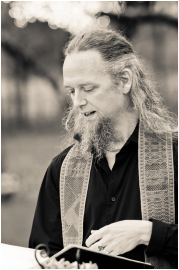It's common for the folks who seek vigorous forms of Flow-Based yoga to be the type of folks who seek sensate, intense experiences. This can be, as mentioned in the NYT article, a source of ego-driven, over-aggressive and irresponsible practices that indeed cause injury - I cannot argue that.
So, my responsibility - ethically, morally, karmicly - is to do no harm. And that can be a challenge with the tribe I attract. So, I continue to study, to learn, to apply and to really keep the students present so that the momentum doesn't overcome the intention and so the habitual can transform into the ritual... moving meditation and devotion in motion.
I tell you this, because, let's be clear - we're working on increasing stability to then move toward additional flexibility; when we really do the work, and stay focused and engaged, using our breath as a guide (firm or deepen the expression, or rather, back off and maintain the breath), we're bound to work muscles, open areas of the body that have been constricted and even begin to bear weight in new or different ways.
This month, we're sharing Yoga, so I have a new student who's joining my tribe, he's a novice yogi, but I'm comfortable with him in class because he understands the 'covenant' - he listens to the teacher more than his ego. And, one benefit of having come to the practice myself only in my 40s is that I clearly remember just how intense it can be for someone with little to no prior physical discipline - hamstrings and shoulders are tight and not used to the action of asana; wrists may lack the bone density for proper support. My recollection was loving the practice, but being sore every day!
Sore, yes, sore - like sore that comes after a great long day digging in the garden or working outside; sore like you are after you give the extra effort to finish a worthwhile project or help a friend move. I'm not the kind who wants to muffle or avoid that experience through pain relief. Be clear, we're not talking pulled muscles, we're talking quads that were worked. It can be tough, it can be intense, it can be a turn-off for some, so I give thanks and praise to my teachers who shared with me these thoughts:
Your body is a vessel, it's a container for essence and experience that is you - your body is not you, but rather what holds you. If you imagine you as a vessel, then a vessel for what? A vessel for prana, love, experience, service, fulfillment, overflowing? Imagine you are a vessel for service, and made of beautiful burnished shiny gold. Why be anything less if you can create this? So, your vessel of gold that contains the you that is saying these very words in your own mind's ear right now is for service... and in that service, you are being used, sometimes even slightly abused. You get scratched, or dented or dinged or tarnished. That's life, that's service.
So, I view the asana practice as that place to serve the vessel of service - we come to light a fire, for no one ever works metal into shape without strong fire; we engage pranayama to stoke the fire and melt, for every forge has its bellows to encourage the heat; then we take the form to the fire, purify, soften and then work out the dents and smooth the scratches. After that, we allow the process of the practice to cool and firm, bringing the form back to ultimate expression, and in Savasana, we polish the vessel, removing the last of the tarnish, any remaining signs of the work, and basking in the shine.
You take the vessel, you move into life and you shine and serve... then you rest. Then, you're sore - this is the moment that matters... recognize that soreness as the brilliance of the shine from the work you've done to serve your vessel, so it serves the you that identifies you, so that you serve all. Your sore body is a gift from yourself that says you believe that you are nothing less precious than gold, and that your work is to define, refine and then shine!
Fill your vessel, then overflow as you shine. Serve and all is coming. Give thanks and praise!



